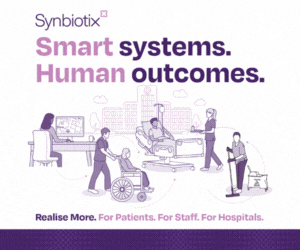NHS England Chief Executive, Simon Stevens has challenged vehicle manufacturers to help ‘blue lights go green’ and cut air pollution by developing more environmentally friendly ambulances.
With polluted air causing cancer, lung disease and heart problems and contributing to around 40,000 deaths each year, the NHS England boss pledged that the health service will step up action to tackle the issue at source as well as treating those affected.
The NHS accounts for almost 10 billion journeys each year – around 3.5% of all road travel – as staff and patients travel to work and appointments and medical supplies are delivered.
The NHS Long Term Plan has committed to cutting mileage and air pollution from rapid response vehicles, patient transport and staff journeys by a fifth by 2024 and ensuring nine out of 10 vehicles are low emission within a decade.
The blueprint for a successful and sustainable health service also sets out how the NHS will use technology to make 30 million outpatient appointments redundant, sparing patients unnecessary trips to and from hospital.
However, speaking at a clean air summit Simon Stevens said he wants to go even further and called on vehicle manufacturers to seize the opportunity provided by plans to upgrade the ambulance fleet coming later this year.
The NHS will draw up a new, single specification that all double crewed ambulances must meet in the autumn before moving to a national procurement process which will help trusts meet the new, tougher response times that have been introduced.
Yorkshire Ambulance Trust is looking at developing a hydrogen-powered hybrid but Simon Stevens said that private manufacturers should be competing to produce environmentally friendly vehicles as well as on performance and price.
Innovation is needed because green technology is not yet advanced enough to power the heavy vehicles with all the kit they carry, meaning ambulances could not be included in the NHS fleet ambitions.
Speaking ahead of a clean air summit in London, Simon Stevens said: “Air pollution is one of our great but under-recognised health challenges, and the NHS can help tackle the causes as well as the consequences, which evidence suggests hits the most vulnerable hardest.
“Thanks to the commitment and ingenuity of NHS staff, we’ve already made big steps in greening the health service, with carbon emissions down by around a fifth over the last decade.
“The NHS Long Term Plan has set out our blueprint for a successful and sustainable health service fit for the future, and now we want ambulance manufacturers to help by developing more environmentally-friendly vehicles – helping our blue lights to ‘go green’.
“This will also help ensure extra investment in the NHS is well spent by reducing the economic impact of air pollution on the health service, bringing benefits for taxpayers as well as our patients.”
An estimated one in three people live in areas with dangerously high levels of air pollution. More than 2,000 GP practices and 200 hospitals in England are in areas affected by toxic air.












